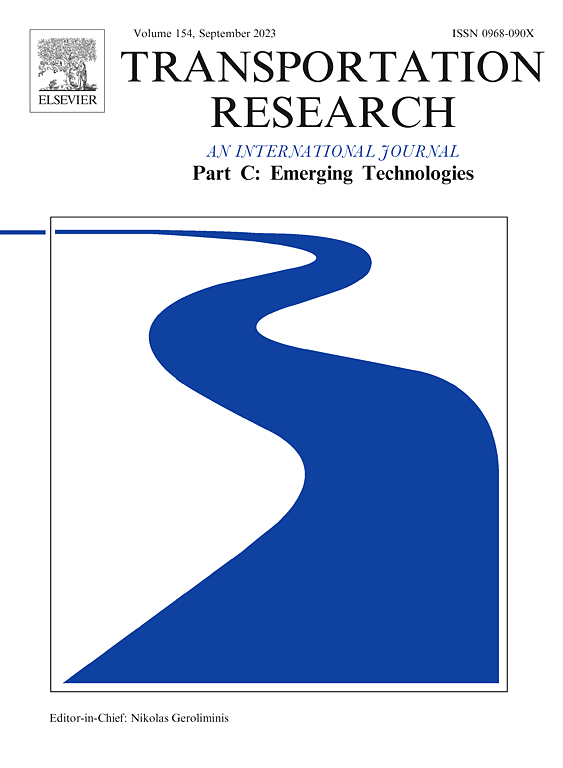Alert modalities in connected and smart work zones to enhance workers’ safety from traffic accidents using virtual reality (VR) experiments
IF 7.6
1区 工程技术
Q1 TRANSPORTATION SCIENCE & TECHNOLOGY
Transportation Research Part C-Emerging Technologies
Pub Date : 2025-03-21
DOI:10.1016/j.trc.2025.105085
引用次数: 0
Abstract
Connected and Smart Work Zones (CSWZ) represent the future of work zones, utilizing technology to enhance safety, efficiency, and productivity among workers. However, research on leveraging technologies to communicate hazards and systematically evaluate different alert modalities to enhance safety remains limited. Assessing and understanding such hazards from the worker’s perspective is highly challenging, making virtual reality (VR) a promising solution that provides flexibility in assessing complex and influencing factors. In this paper, a set of 12 VR evaluation tasks for alert technology-assisted work zones are developed, encompassing various attributes by applying orthogonal design principles. Participants are exposed to these VR evaluation tasks, generating a dataset comprising 222 distinct scenarios. A proximity-based threshold is used to quantify a critical event based on worker and vehicle interaction orientations. The impact of different alert modalities (no alert, centralized, and personalized alert systems) on critical safety outcomes (reaction time and reaching safe region) using discrete choice modelling framework and kinematic behavior (temporal variation of evasive speed and relative distance) are comprehensively evaluated. The personalized alert consistently demonstrated its effectiveness by facilitating faster reactions and more effective evasive actions, significantly improving safety outcomes through a three-phase sequential motion pattern of acceleration, speed maintenance, and deceleration. This study provides a comprehensive assessment of the effectiveness of different alert systems, offering valuable insights for mitigating risks associated with intruding vehicles, especially in scenarios involving high vehicle speeds and worker involvement levels.
求助全文
约1分钟内获得全文
求助全文
来源期刊
CiteScore
15.80
自引率
12.00%
发文量
332
审稿时长
64 days
期刊介绍:
Transportation Research: Part C (TR_C) is dedicated to showcasing high-quality, scholarly research that delves into the development, applications, and implications of transportation systems and emerging technologies. Our focus lies not solely on individual technologies, but rather on their broader implications for the planning, design, operation, control, maintenance, and rehabilitation of transportation systems, services, and components. In essence, the intellectual core of the journal revolves around the transportation aspect rather than the technology itself. We actively encourage the integration of quantitative methods from diverse fields such as operations research, control systems, complex networks, computer science, and artificial intelligence. Join us in exploring the intersection of transportation systems and emerging technologies to drive innovation and progress in the field.

 求助内容:
求助内容: 应助结果提醒方式:
应助结果提醒方式:


